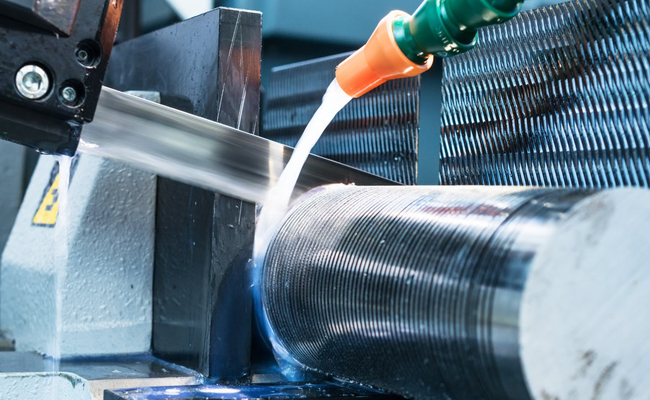CH-300SA Miter Band Saw Machine for channel steels
Cutting Capacity :
Here is a comprehensive guide to band saw coolant types, covering the main categories, their pros and cons, and key selection factors.

The primary purpose of band saw coolant (or cutting fluid) is to:
Reduce Heat: Dissipate the intense friction-generated heat at the blade/workpiece interface.
Lubricate: Reduce friction between the blade teeth and the material, decreasing power consumption and wear.
Remove Chips: Flush away metal swarf (chips) from the cut to prevent re-welding and ensure a clean, accurate cut.
Protect: Prevent rust on both the machine and the newly cut material.
There are three main categories of coolants used in band sawing, each with distinct properties.
These are oil concentrates that emulsify into a milky, white fluid when mixed with water.
How They Work: They form an oil-in-water emulsion, providing the cooling of water with the lubricity of oil.
Appearance: Milky, opaque white liquid.
Best For:
General-purpose cutting of ferrous metals (steel, stainless steel, cast iron).
Heavy-duty cutting operations.
Situations where good lubrication is needed but straight oil is too messy.
Pros:
Good balance between cooling and lubrication.
More economical than straight oils due to dilution with water (typical ratios from 1:10 to 1:20).
Good rust prevention for the machine and material.
Cons:
Prone to bacteria and fungus growth (“Monday morning smell”), requiring biocides.
Can separate or become unstable if mixed incorrectly or with hard water.
Shorter sump life compared to synthetic fluids.
Leaves a oily residue on parts and the machine.
These are chemical solutions that contain no petroleum oil. They are a mixture of lubricating polymers, corrosion inhibitors, and other additives in water.
How They Work: They rely on synthetic lubricants and extreme pressure (EP) additives to reduce friction, while water provides superior cooling.
Appearance: Clear or translucent solution.
Best For:
High-production environments where heat reduction is critical.
Non-ferrous metals like aluminum (excellent for preventing “stick-welding” of aluminum to the blade).
Applications where cleanliness is important (no oily residue).
Pros:
Excellent cooling capabilities.
Very clean—parts come out residue-free and are easier to handle.
Long sump life; highly resistant to bacteria and rancidity.
Excellent visibility of the cut line.
Cons:
Generally offers less lubrication than soluble oils for very tough alloys.
Can be more expensive per gallon (but often last longer).
Some formulas can be slightly more aggressive on paint or machine seals (though most modern synthetics are safe).
These are 100% petroleum, vegetable, or synthetic oils used without water dilution.
How They Work: They provide maximum lubrication and minimal cooling, forming a protective film on the tool and workpiece.
Appearance: Looks like regular oil.
Best For:
Extremely difficult-to-machine metals (e.g., titanium, high-nickel alloys).
Threading and tapping operations on a saw.
Severe, low-speed, high-pressure cutting.
Pros:
Maximum lubrication and lubricity.
Excellent for protecting the tool and achieving a fine finish on the cut.
Long-lasting and stable; does not go rancid.
Cons:
Very poor heat dissipation (can be a fire hazard if misted).
Messy—creates smoke, mist, and oily chips, parts, and floors.
High cost (no water dilution).
Not suitable for most high-speed production band sawing due to heat buildup.
Semi-Synthetic Fluids: A hybrid blend of soluble oil and synthetic fluid. They aim to combine the better lubrication of soluble oil with the cleanliness and bacterial resistance of synthetics. They have a semi-transparent appearance.
Dry Cutting: For some materials (like structural steel, cast iron, or some plastics), no coolant is used. This requires a blade specifically designed to run dry and is typically only for non-precision cutting. It eliminates fluid cost and disposal issues but sacrifices blade life and cut quality on most materials.
| Factor | Question to Ask | Recommended Type |
|---|---|---|
| Material Being Cut | Ferrous (Steel, Stainless)? | Soluble Oil or Semi-Synthetic |
| Aluminum or Non-Ferrous? | Synthetic (highly preferred) | |
| Exotic Alloys (Titanium)? | Straight Oil (for severe duty) | |
| Operation | High-Speed Production? | Synthetic (for cooling & cleanliness) |
| Tough, Low-Speed Cutting? | Soluble Oil or Straight Oil | |
| Maintenance | Want long life, easy management? | Synthetic |
| Okay with monitoring concentration? | Soluble Oil | |
| Workspace | Need a clean, non-oily environment? | Synthetic |
| Worried about rust prevention? | Soluble Oil or Synthetic (both are good) | |
| Budget | Lowest upfront cost? | Soluble Oil |
| Lowest long-term cost? | Synthetic (longer life, less downtime) |
Mix Correctly: Always add the concentrate to the water, not water to the concentrate, to ensure proper emulsification. Use a refractometer to check and maintain the correct concentration.
Maintain Cleanliness: Use a skimmer to remove tramp oils and a filter system to remove metal chips. This extends coolant life significantly.
Prevent Rancidity: For soluble oils, use biocides as recommended by the manufacturer to control bacteria growth.
Match to Your Blade: Some advanced blades (like carbide-tipped) are designed for specific coolant types. Always check the blade manufacturer’s recommendation.
Final Recommendation: For most modern band saw shops cutting a mix of steel, stainless steel, and aluminum, a high-quality synthetic coolant is often the best overall choice due to its excellent cooling, cleanliness, long life, and versatility.
Cutting Capacity :
Cutting Capacity :